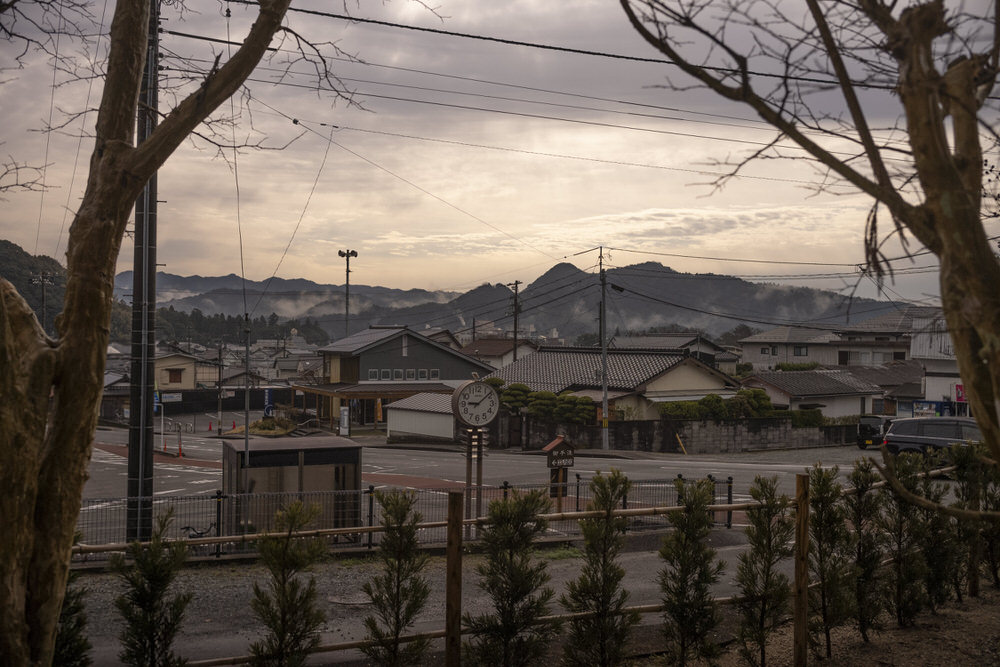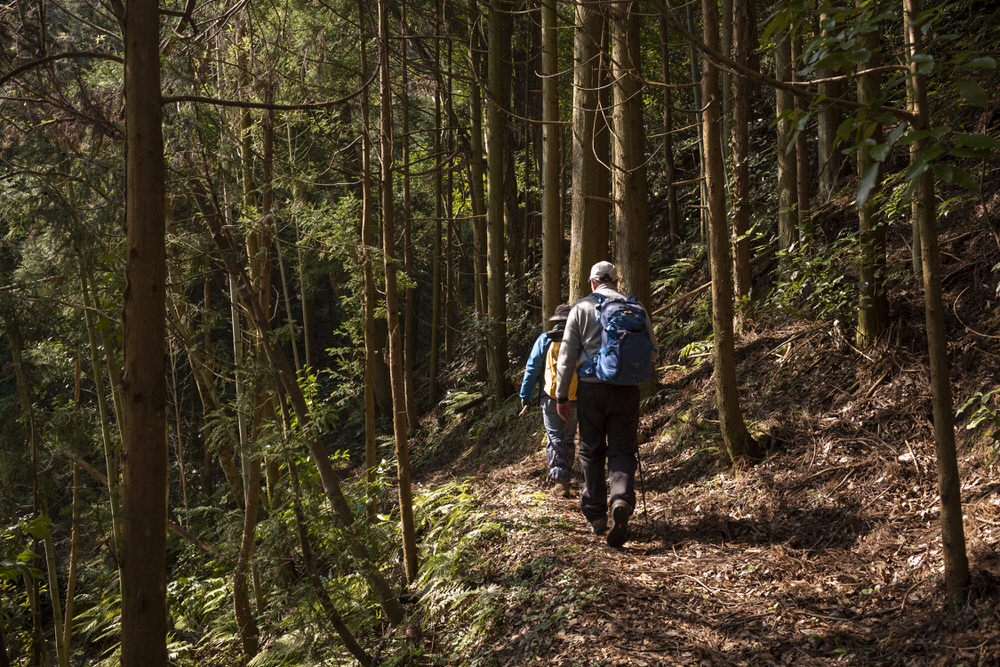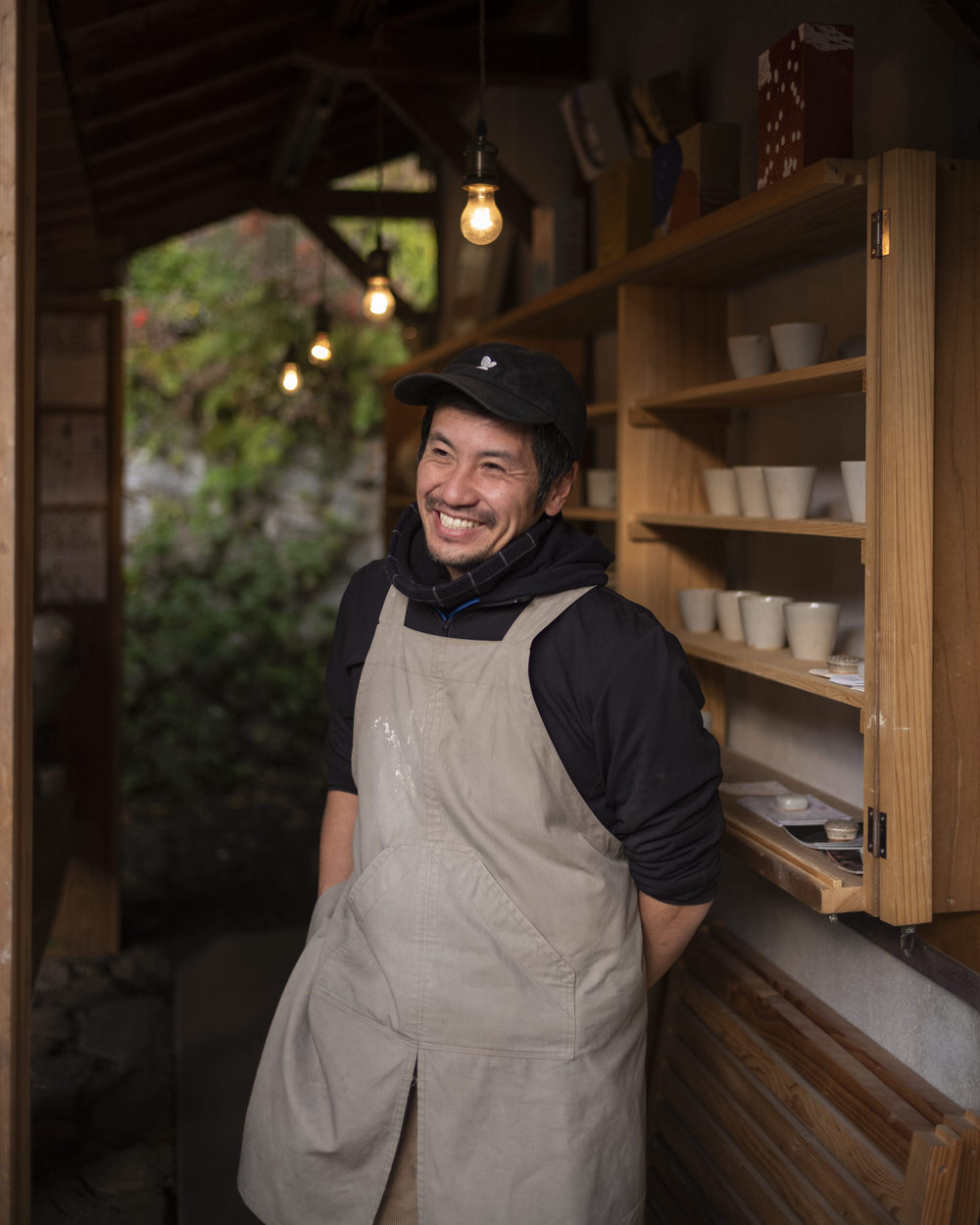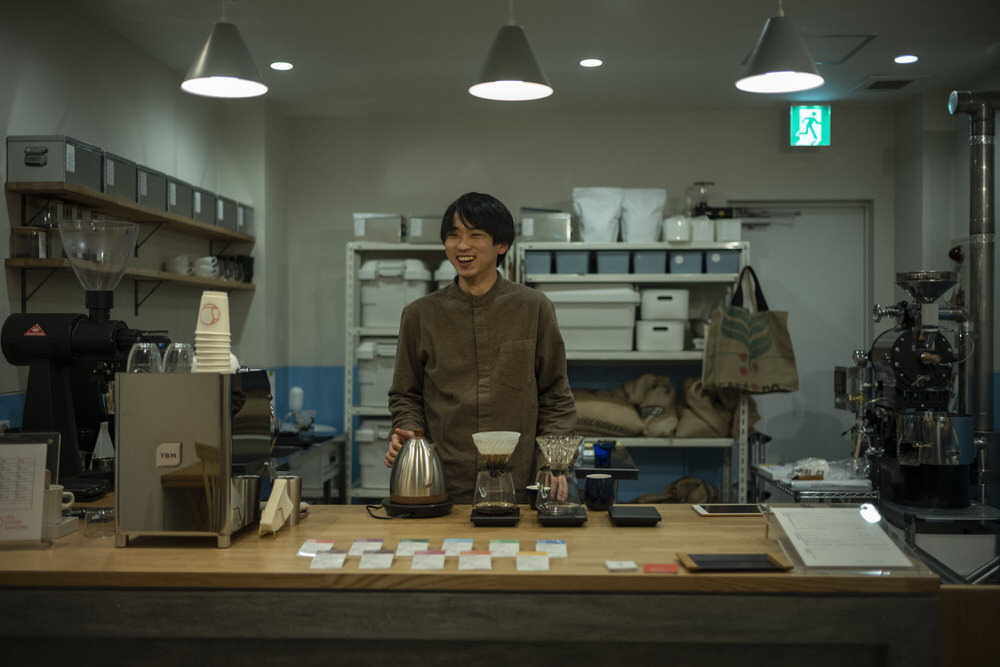
Yamaguchi City — My 'New York Times' Pick This Year
Yamaguchi City is #3 on the New York Times Place to Visit 2024 list
Ridgeline Transmission 177
A few months ago The New York Times asked me for my picks for places to visit in 2024. For me, the choice was obvious: Yamaguchi City.
Those of us submitting a) don’t really know if our choice has been selected, and b) don’t know the placement of that choice until the day the list is published. The “52 Places to Visit in 2024” list was published yesterday, and Yamaguchi City was placed #3, right after Paris. (#1 is the “Path of Totality” for the total solar eclipse in North America, which, yes — GO SEE THAT IF YOU CAN.)1
So why Yamaguchi City? I’ve been getting calls from Japanese media all day, and instead of fielding the same questions a million times, I figured I’d write up precisely why here.

Yamaguchi falls into the same category as my pick last year, Morioka (#2 in “52 Places to Visit 2023”) — that is, a mid-sized regional city. Morioka has about 300,000 residents. Yamaguchi City has about 200,000.
Here’s what I wrote about Yamaguchi in The Times, with some notes appended:
Yamaguchi is often called the “Kyoto of the West,” though it’s much more interesting than that — and it suffers from considerably less “tourism pollution.” A compact city of about 190,000, it lies in a narrow valley between the Inland and Japan seas.
I want to be clear — I’m not saying Yamaguchi City is more interesting than Kyoto (as some major Japanese news outlets have already misreported), but rather it’s more interesting than simply reducing it to “Kyoto of the west.” But this goes without saying. Of course Yamaguchi City is its own thing: Kyoto’s population is 2.5 million people, a whole ’nother scale.
Yamaguchi City is lean, compact, smaller than Morioka, but features many of the same qualities that make Morioka so appealing. It has a vibrant sense of life being lived as you walk its streets. It’s part of the growing pantheon of smaller cities in Japan attracting younger entrepreneurs. It is eminently walkable — in fact, it seems to demand walking, rewards walking. The streets are narrow, circuitous, some along small rivers, the whole of the city cradled in the southwest-northeast valley starting at Shin-Yamaguchi, extending to Niho. Walls of serrated mountains frame its life and guide you into and own of its central spaces.
The city rises as you walk north, the Ruriko-ji Pagoda and gardens seeming to float above it all.

The first time I visited Yamaguchi was in March 2020, just as the pandemic was maybe happening, maybe not happening — no one was quite yet sure. I was traveling with my buddy John. We were setting off on a reconnaissance walk along the Hagi Ōkan.
I wrote about that trip and the walk and the city right here, nearly four years ago, in Ridgeline 061:
Yamaguchi City has been our base for the last three nights and has proven weirdly delightful; I came with no expectations, and while its tagline: “The Kyoto of the West” seems perhaps a notch or two overly grandiose, this small town is charming and far more cosmopolitan than expected. There’s the sakura-lined Ichinosaka River with a superb ice cream / tea shop, solid pour-over coffee stands, and a general humming of youth and energy about town. There’s the impressive Ruriko-ji five story, original 15th century (1442, Muromachi era) wooden pagoda with cypress shingles and beautiful roof lines. There’s even a Shigemori Mirei garden over at Jyoei-ji (though the whole thing is in need of a little TLC).
Clearly, I was impressed from the get-go. And the Hagi Ōkan walk was genuinely pleasant. (Hagi, itself, up north, abutting the Sea of Japan is also a charming city, and one I’d like to go back to and spend more time in.)

That first trip stuck in my mind, and when I set off on my Ten Cities tour in November 2021 (the so called: Tiny Barber, Post Office tour), of course I added Yamaguchi City to the list.
On December 8, 2021, I was back:
If you look closely you’ll find a treehouse. It hangs a few hundred meters west from the registered treasure, world heritage, mega-and-singular-tourist-nucleus of Yamaguchi City, the five story pagoda of Ruriko-ji. Ignore the pagoda. You’ve seen stuff like that before. Instead, walk west, look closely in the woods and you’ll find the tree house built from bamboo. Down from that treehouse sits a small shed. Inside that shed is a kiln, and inside that kiln you’ll find the glazed works of Masai Gakuji, or just Gakuji, as everyone — the foot massage lady, the coffee shop guys, the oden shack mama — in town seems to call him.

Already — you can see by the way I wrote — I had met so many people in the city. And they had been so kind. But Gakuji standing in front of his Mizunoue kiln, rose above them all in ease of connection:
I suppose if I was ranking folks on this trip, I’d put Gakuji up there on the top of some cosmic chart. I felt an immediate and pervasive kinship with him. There was an ease to our meeting, and effortlessness to the conversation. He placed no limits on what stories I could tell. He felt like a brother, something rare here in Japan, where formalities and walls built through language often conspire to keep a sense of friendship at bay for months or years. Certainly when alcohol isn’t involved. And when alcohol is involved, that itself becomes its own artifice and makes parsing the real from the affected an impossible task.
I felt variations on this ease with many of the city’s inhabitants. Yamaguchi still ranks, for me, as one of the most friendly places I’ve been in Japan.

More from my New York Times entry:
With its impeccable gardens and its stunning five-story pagoda, Rurikoji Temple is a national treasure. The city’s small winding lanes offer an assortment of experiences: pottery kilns like Mizunoue, situated on the grounds of Toshunji Temple; chic coffee shops like Log and Coffeeboy, and older-style options like Haraguchi; and wonderful counter-only shops that serve oden, or one-pot dishes. Just a 15-minute walk south is the hot-springs village of Yuda Onsen.
The folks at Coffee Boy back in 2021:

And the young owner of Log:

The proximity to Yuda adds a bit of quirkiness to Yamaguchi City. Depending on where you’re walking from and to, 15-30 minutes should get you there. You’ll pass the new Center for Arts and Media. You’ll pass the Nakahara Chuya Memorial Museum — a famed 20th century poet, brilliant, outsized, gone at 30, who loved sake and Yuda itself, and would walk into and out of the city from the mouth of the valley. There’s the jazz kissa, Jazz Spot Porche, which I meant to visit but missed when I was in town.
Back in the Times:
Given the tourist crush in Kyoto, Yamaguchi has also been offering a smaller scale — but no less historic — alternative to Kyoto’s Gion summer festival for some 600 years. Yamaguchi’s Gion Festival, which features parades, costumes and dancing, also takes place in July; 2024 will be its first year operating again at full tilt since the pre-Covid era.
Festivals are great fun. But for me, a city is all about its people. (And the better the people, the better the festivals.)
On my last day during that previous visit in 2021, I popped into kissa Churamu for lunch. Here’s what I wrote:
I napped among the elderly customers who were also napping. The curry was taking forever. I had probably misordered. But the nap was nice. In a somnambulistic haze I listened. The other customers, mainly silent, mostly asleep, would sometimes pipe up.
Oh, I got fat, one said. She was the size of a mouse.
You probably need to get fat!
No, no, it’s easier to move around when I’m skinny.
Well, what ya weight then?
Oh, I’ll be found out!
Forty?
Forty! Oh, come on. Of course. I’ve been fifty, for ages now.
But you got that tiny face. Tiny face, my girl.
Thirty minutes later an old man walks in and starts busing the table he wants to sit at. The shop is run by one micro-sized old woman wearing dark glasses with thick rims.
Oh, you stop that, she says.
I’ll help I’ll help, the old guy says, hobbling, carrying two half-drunk glasses of water back to the counter.
Oh, no you don’t. You do that and I won’t be able to extract payment!
The curry was excellent — a nice pile of veggies, a great salad. Satisfaction. The nap proved analgesic. My body no longer ached. I was restored.
One man behind me sneezed fourteen times and I thought we might need a defibrillator. I took that as a sign to leave.
Upon handing over my cash, the tiny proprietress spoke amiably with me, asked if I was Japanese, or if I lived nearby, wanted to know what kind of work I did. We chatted — her behind and nearly below the counter, me all ready to leave — for a good fifteen minutes. The shop had been around for thirty-nine years. It felt like the customers were eternal fixtures. I’d go on to tell everyone else today about that shop and no one knew of it; I began to wonder if I imagined it.
I get asked all the time: Why a city like Yamaguchi? It strikes the right balance. You’ve got Churamu and you’ve got Log. Both serve coffee, but one’s decades old, winding down, and the other’s vibrant and just getting started. You have temples, but you also have kilns snuck into the corners of those temples. You have World Heritage pagodas paired with well-regarded jazz kissas. You have monuments to old poets, and epic mountain walks to and from the ocean.
Having walked thousands of kilometers across Japan, I’ve seen the disappearance of small villages. I’ve seen slightly larger towns all shuttered and ready to close. (Few things are more heart-wrenching than a literally rusted, almost-fully-shuttered shotengai shopping street.) And of course I’ve seen and lived in the thrumming, boundless Tokyo.
Cities like Yamaguchi and Morioka occupy an Other space — an alternative space between the disappearing, somewhat unsustainable, countryside villages, and the non-stop megalopolises. If Kyoto and Kanazawa and Hiroshima are the A-sides of Japan, Yamaguchi and Morioka are B-sides — the side often containing the understated genius of a record. I see a city like Yamaguchi and I think: Good life is possible here, full life, on a human scale, operating within the bounds of a warm community, feeling your own small contributions meaningfully add up in the lives of people around you. When I travel I’m not looking for the most delicious bowl of ramen or the perfect croissant,2 but rather archetypes of ways of living that set my imagination ablaze, that make me grateful to have encountered those people, and grateful for the social and political infrastructure that exists, allowing these people to live in their own, additive ways.
Yamaguchi City. What a fabulous place. I’m glad to have first visited it years ago. And I’m glad it got put up near the top of this year’s New York Times list. #3. Congrats to the city. And please go, check it out, if you happen to be nearby.
C

Noted
-
I say “placed” instead of “ranked” because technically it isn’t a ranking, but of course everyone reads it as one. ↩︎
-
Sure I’ll happily scarf it down given the chance. But! Making a beeline for the most famous food of an area is often the quickest way to not know a place. I love finding the most normal, least exceptional cafe in a city, setting up perch in the corner, spending a few quiet hours there, just watching the customers, reading, taking notes. A good kissa will tell you more about a city than a famous noodle shop ever will. ↩︎
